The remarkable journey of migratory birds across vast, inhospitable landscapes has long captivated scientists and bird enthusiasts alike. Among these epic travelers, one species stands out for its extraordinary adaptation to using desert environments as critical refueling stations during migration: the Ruby-throated Hummingbird (Archilochus colubris). These tiny avian marvels, weighing less than a penny, undertake one of nature’s most impressive journeys relative to their size, crossing the Gulf of Mexico and navigating through arid regions that once seemed impassable barriers. What was once considered impossible—a desert serving as a life-sustaining habitat—has now been revealed as an essential component of this species’ migration strategy. This article explores how these seemingly inhospitable landscapes transformed from migration barriers into crucial stopovers that ultimately shaped the evolutionary journey of these remarkable birds.
The Extraordinary Migration Pattern of Ruby-throated Hummingbirds
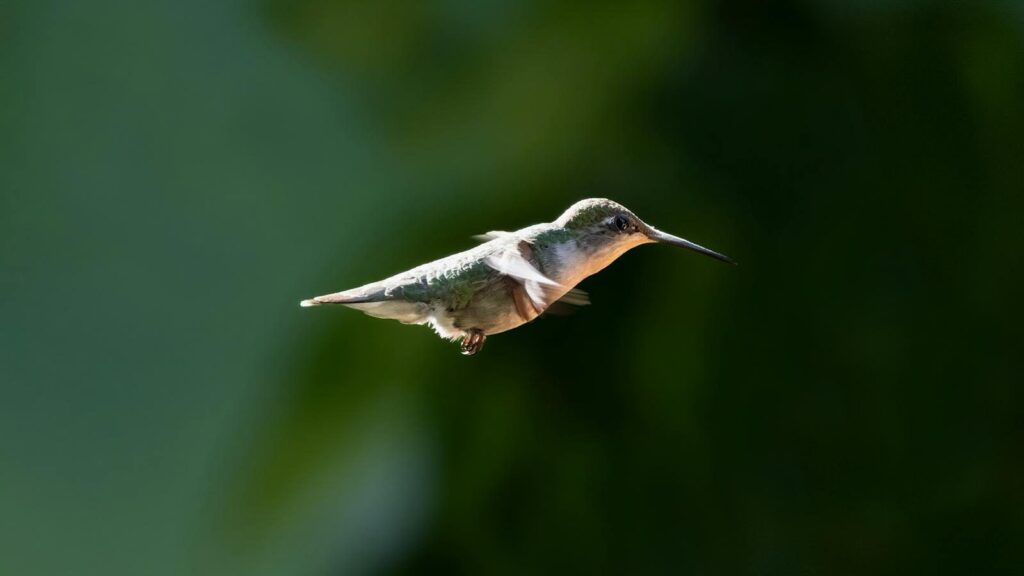
Ruby-throated Hummingbirds embark on a migration journey spanning up to 2,000 miles twice annually between their breeding grounds in eastern North America and wintering habitats in Central America. Most remarkably, many individuals complete a non-stop flight across the Gulf of Mexico, covering approximately 500 miles in a single journey lasting 18-22 hours without rest. Before undertaking this challenging crossing, these birds must nearly double their body weight, increasing from about 3 grams to 6 grams by consuming nectar equivalent to 1,000 flowers daily. Their heart rates during migration can exceed 1,200 beats per minute, powering wings that beat 53 times per second and enabling flight speeds of up to 30 mph when necessary. This physiological feat represents one of the most energy-intensive migrations in the bird world relative to body size.
The Desert Paradox: From Barrier to Essential Habitat

The deserts of the southwestern United States and northern Mexico initially appear contradictory to the needs of a nectar-dependent species like the Ruby-throated Hummingbird. Historically, scientists believed these arid regions represented formidable barriers that forced migratory routes around rather than through them. Recent research, however, has revealed that these deserts actually serve as critical stopover points, particularly during spring migration northward. The timing of hummingbird migration coincides precisely with the desert flowering season, creating temporal oases of abundant nectar resources. This synchronization demonstrates a remarkable evolutionary adaptation where the birds’ migration schedule has aligned with brief but intense flowering periods in these seemingly barren landscapes. The discovery has fundamentally changed our understanding of how small migrants navigate challenging landscapes.
Desert Flowering Cycles: Nature’s Perfect Timing
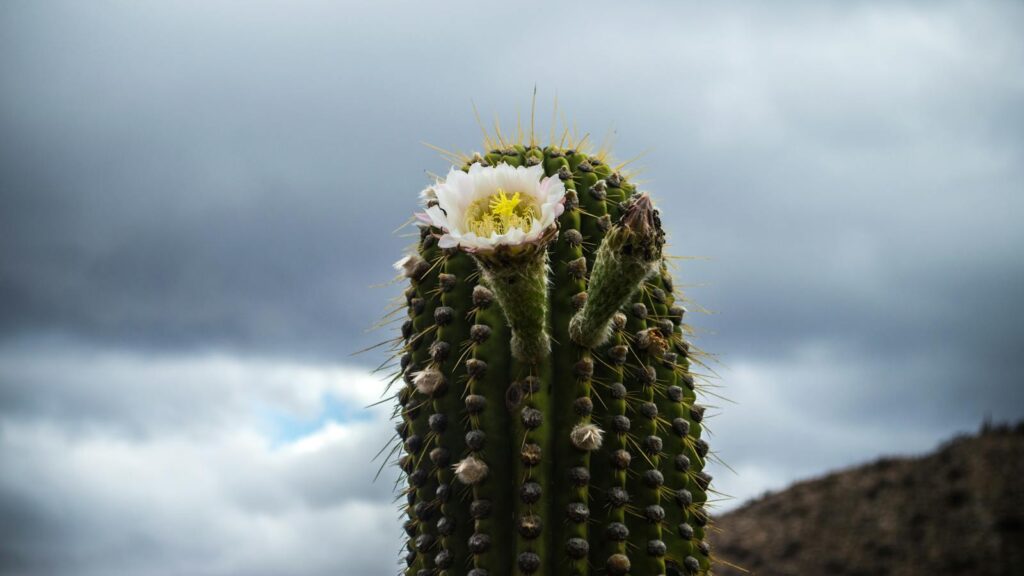
The seasonal blooming patterns of desert plants exhibit extraordinary synchronization with hummingbird migration schedules. Many desert species, including ocotillo, desert willow, and various cacti, produce nectar-rich flowers precisely during the spring migration window of March through early May. This flowering phenomenon is triggered by winter rains that typically occur months earlier, creating a delayed but predictable nectar bonanza. The desert’s unique ability to transform rapidly from apparent barrenness to abundant flowering creates temporary resource hotspots essential for migrating hummingbirds. Studies tracking flowering patterns over decades demonstrate that despite year-to-year variations in timing, the overall flowering window remains remarkably consistent, allowing hummingbirds to evolve reliable migration schedules around these natural cycles. The relationship represents one of nature’s most precisely timed ecological partnerships.
Physiological Adaptations for Desert Feeding
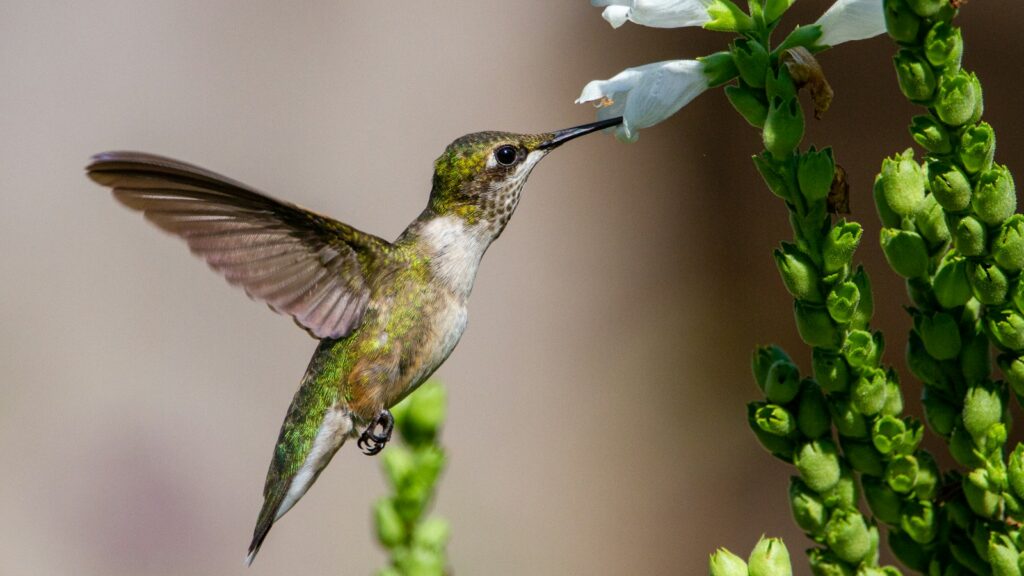
Ruby-throated Hummingbirds have developed specialized physiological adaptations specifically for maximizing resource extraction during desert stopovers. Their exceptional memory allows them to remember the locations of productive flowering patches from previous migrations, creating mental maps of reliable feeding stations. Their digestive systems can process nectar extremely efficiently, extracting up to 97% of available sugars and converting them to energy within minutes. During desert stopovers, these birds can enter a specialized metabolic state that allows them to consume up to 100% of their body weight in nectar daily, twice their normal intake. Perhaps most remarkably, research has identified unique enzyme profiles in migrating individuals that enhance their ability to process the particular nectar compounds found in desert plants, demonstrating evolutionary adaptations specifically for desert feeding.
The Critical Role of Desert Microclimates
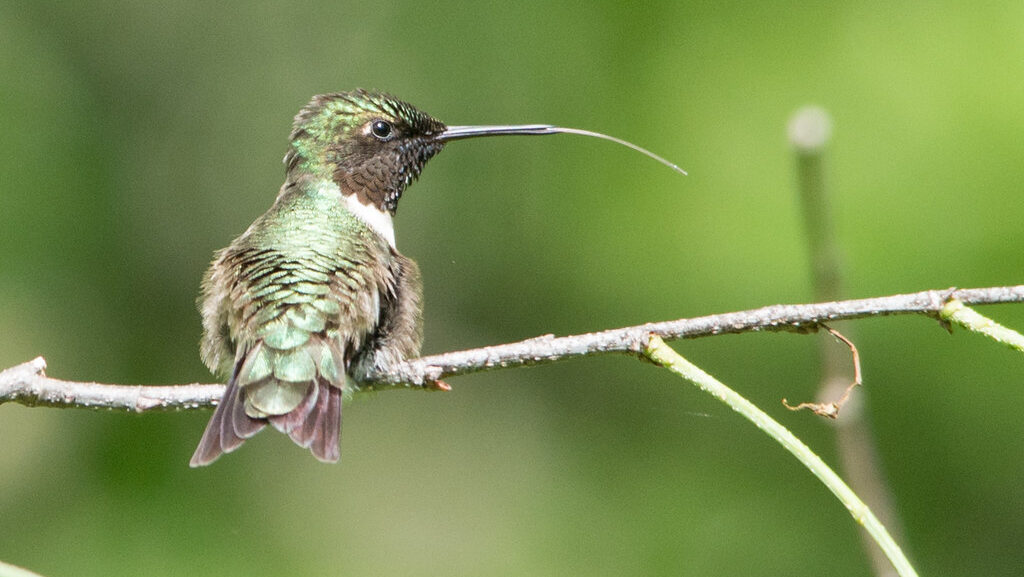
Desert landscapes, contrary to their reputation for uniform harshness, actually contain diverse microclimates that prove essential for hummingbird survival during stopovers. Canyon areas, riparian zones, and north-facing slopes create cooler, more humid pockets that serve as refuges during the hottest parts of the day. These microhabitats can be up to 15 degrees cooler than surrounding areas, allowing hummingbirds to regulate body temperature more effectively and reduce water loss. Tracking studies have revealed that migrating hummingbirds navigate between these microhabitats with remarkable precision, utilizing morning and evening hours for primary feeding while seeking shelter during midday heat. The birds’ ability to exploit these microhabitat variations enables them to persist in landscapes that would otherwise exceed their physiological tolerances. This behavioral adaptation represents a sophisticated response to the extreme conditions presented by desert environments.
Evolutionary History of the Desert Migration Route
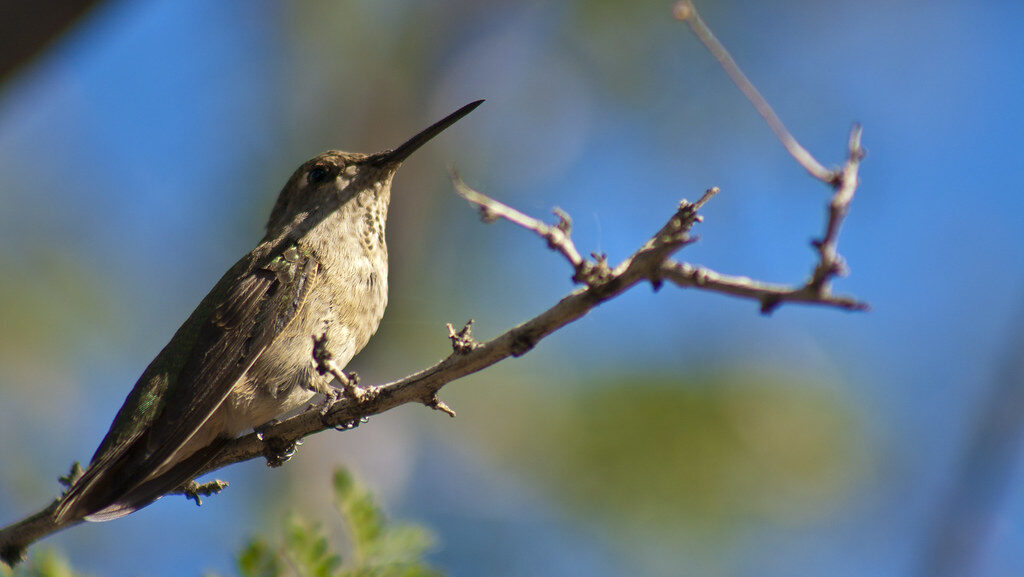
The incorporation of desert stopovers into the Ruby-throated Hummingbird’s migration strategy represents a relatively recent evolutionary development. Genetic analysis suggests this adaptation emerged approximately 12,000-15,000 years ago, following the last ice age when warming climates expanded desert regions across the migration corridor. Fossil records indicate that prehistoric ancestors of today’s hummingbirds initially avoided these regions entirely, taking significantly longer coastal routes. The gradual development of the desert route likely occurred through a process of natural selection, where individuals who successfully utilized desert resources gained significant competitive advantages through shorter migration distances. This evolutionary shift demonstrates remarkable adaptability, transforming what was once a geographic obstacle into a critical resource opportunity. The relatively rapid development of this adaptation highlights the species’ exceptional evolutionary flexibility in response to changing environmental conditions.
The Energy Economics of Desert Stopovers

For Ruby-throated Hummingbirds, desert stopovers represent a critical energy management strategy that dramatically increases migration survival rates. Research using tiny radio transmitters has revealed that birds utilizing desert feeding opportunities can replenish their fat reserves at rates up to 7-10% of their body weight daily during optimal conditions. This rapid refueling capability allows them to reduce overall migration duration by up to two weeks compared to alternative routes, significantly decreasing total energy expenditure and predation exposure. Mathematical models comparing different migration strategies demonstrate that the desert route, despite its challenging conditions, offers a 22% reduction in total energy costs when factoring in the rich nectar resources and shortened distance. The energetic advantage is so significant that birds will delay migration by several days to take advantage of desert flowering events, demonstrating the essential nature of these stopover sites to their overall migration strategy.
Threats to Desert Stopover Habitats

The critical desert habitats that support hummingbird migration face mounting threats from multiple sources. Climate change projections indicate shifting rainfall patterns that could disrupt the precise timing between flowering cycles and migration schedules, potentially creating serious resource mismatches. Urban expansion throughout the southwestern United States has already eliminated significant portions of prime stopover habitat, with development continuing in many key areas. Additionally, the introduction of invasive plant species has altered native flowering communities in many regions, often replacing nectar-rich native plants with species offering fewer resources for migrating hummingbirds. Water diversion projects affecting desert riparian zones have particularly severe impacts, as these areas contain the highest concentration of flowering resources. Conservation efforts focused specifically on preserving desert migration corridors represent an emerging priority for protecting this remarkable natural phenomenon.
Citizen Science Revealing Migration Patterns
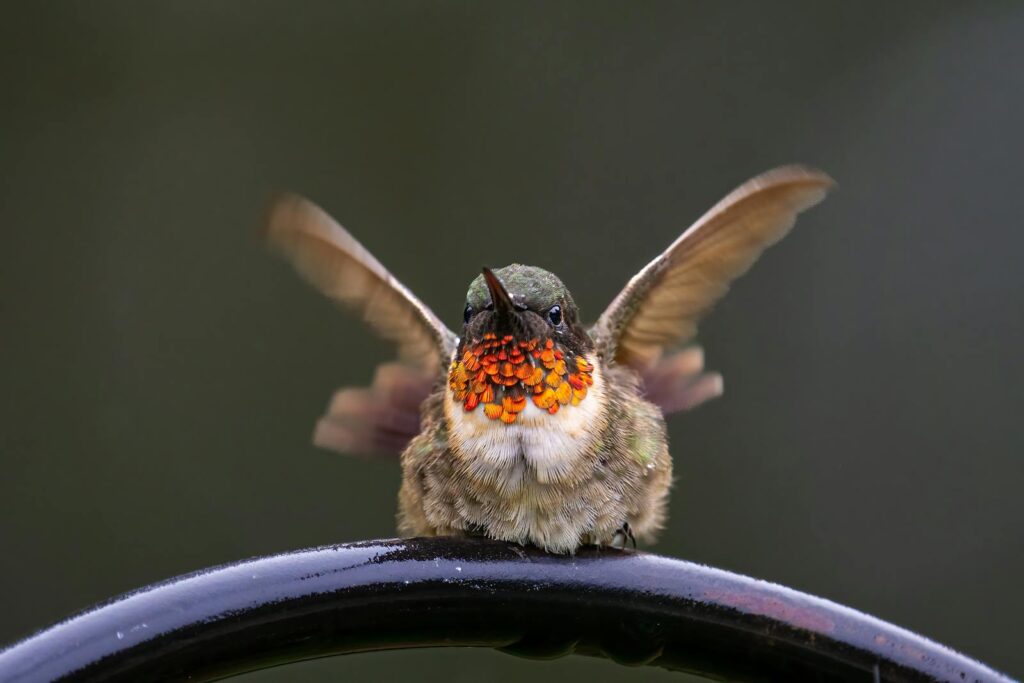
The understanding of hummingbird desert migration has been revolutionized through expansive citizen science initiatives that track individual sightings across the migration range. The Hummingbird Monitoring Network, established in 2002, has coordinated thousands of volunteers who document arrivals, departures, and feeding behavior throughout the migration corridor. This collective effort has generated the most comprehensive dataset on hummingbird movements ever assembled, revealing previously unknown stopover locations and timing patterns with remarkable precision. The Journey North project has further enhanced this knowledge by creating real-time migration maps that demonstrate how movements correlate with flowering events across the landscape. These citizen science contributions have proven particularly valuable for tracking responses to unusual weather patterns, documenting how birds adjust their movements in response to early or delayed flowering seasons. The collaborative approach has transformed our understanding of migration dynamics and created powerful conservation advocacy through public engagement.
Technological Breakthroughs in Migration Research

Recent technological innovations have enabled unprecedented insights into how Ruby-throated Hummingbirds utilize desert habitats during migration. The development of miniaturized radio transmitters weighing just 0.2 grams has allowed researchers to track individual birds throughout their journey for the first time, revealing precise movement patterns and stopover durations. High-resolution satellite imagery combined with ground-based flowering surveys has created detailed “nectar maps” that predict resource availability across the landscape with remarkable accuracy. Perhaps most revolutionary has been the application of stable isotope analysis of feather samples, which can determine exactly where an individual bird has been feeding based on the unique chemical signatures of different regional nectar sources. These technologies have conclusively demonstrated not only that hummingbirds use desert habitats but that these stopovers constitute the most resource-rich portions of their entire migration route, contrary to earlier assumptions about desert productivity.
Conservation Strategies for Desert Migration Corridors

Protecting the critical desert habitats that support hummingbird migration requires specialized conservation approaches tailored to these unique ecosystems. Several organizations have established “nectar corridors” by working with landowners to plant and maintain native flowering species along migration routes, creating stepping-stone habitats through otherwise developed areas. Water conservation initiatives focusing on preserving natural desert springs and seeps have proven particularly effective, as these sites often support disproportionately rich flowering resources in otherwise arid landscapes. Conservation easements specifically designed to protect flowering phenology rather than just total acreage represent an innovative approach, ensuring that the temporal aspects of resource availability are maintained. Education programs targeting both residential and commercial landscaping practices in desert communities have successfully increased the planting of hummingbird-friendly native species, expanding available resources during critical migration periods. These multifaceted conservation strategies acknowledge both the spatial and temporal dimensions of migration habitat requirements.
Cultural Significance of Desert Hummingbird Migrations
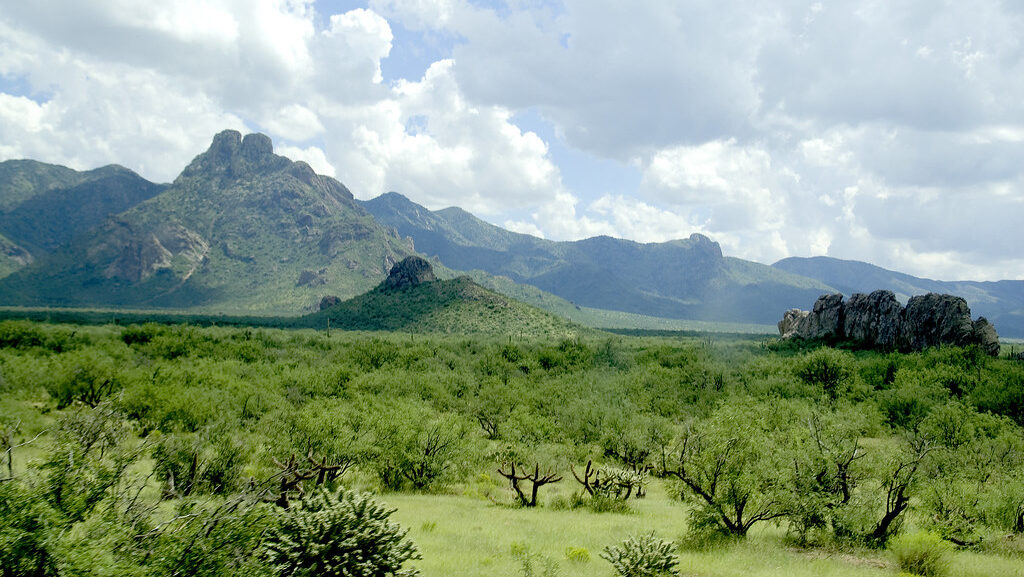
The phenomenon of hummingbird desert migration holds deep cultural significance for many indigenous communities throughout the migration corridor. The Tohono O’odham people of southern Arizona traditionally view the arrival of hummingbirds with desert flowering as a sacred event signifying renewal and the successful transition between seasons. Their traditional ecological knowledge includes detailed understanding of the relationship between rainfall patterns, flowering cycles, and bird movements that predates scientific documentation by centuries. Several communities along the migration route have developed economic opportunities through hummingbird-focused ecotourism, establishing festivals timed to peak migration periods that attract thousands of visitors annually. These cultural connections provide powerful motivation for conservation efforts by embedding ecological preservation within community identity and economic interests. The blending of traditional knowledge with modern scientific understanding creates particularly effective conservation frameworks that honor both the natural and cultural dimensions of this remarkable migration phenomenon.
Future Prospects for Desert Migrators
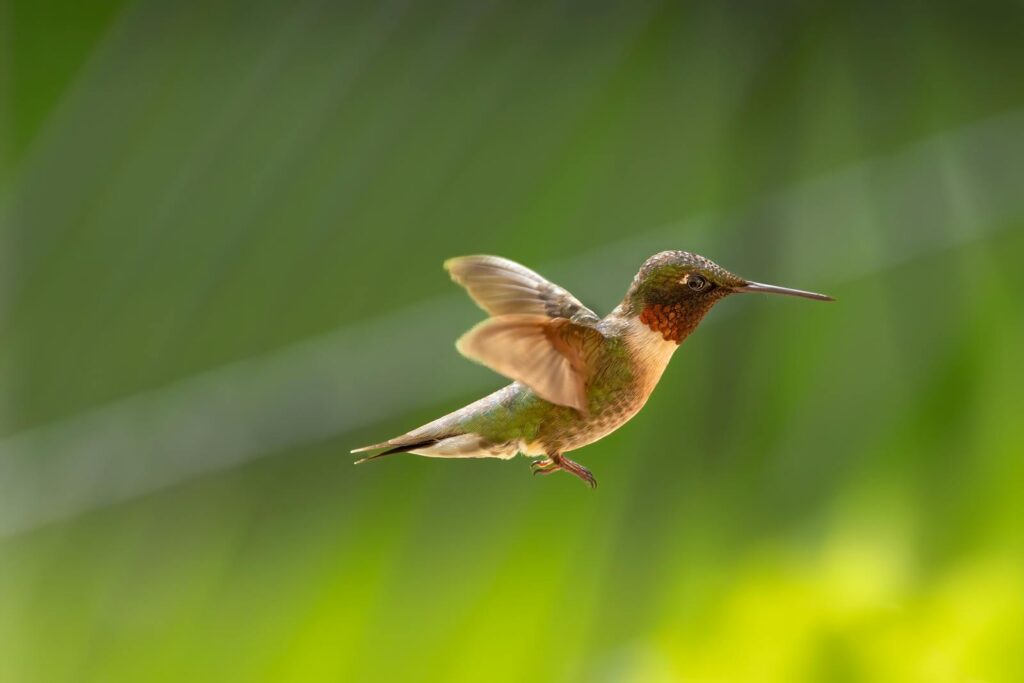
The future of Ruby-throated Hummingbirds and their remarkable desert migration strategy faces both challenges and opportunities in a rapidly changing world. Climate modeling suggests that while overall desert flowering may become more unpredictable, the birds’ exceptional adaptability and intelligence may allow them to adjust their migration timing accordingly, provided habitat connectivity remains intact. Encouragingly, restoration ecology focusing specifically on nectar corridors has demonstrated that relatively small investments in strategic locations can yield significant benefits for migrating populations. Urban planning initiatives in several southwestern cities now incorporate hummingbird migration needs into development regulations, preserving key habitat features even within expanding metropolitan areas. Perhaps most promising is the growing recognition of these desert corridors as essential climate adaptation zones that require protection not just for hummingbirds but for entire ecological communities facing climate disruption. The remarkable story of how these tiny birds transformed desert barriers into migration highways offers inspiration for conservation approaches that work with, rather than against, natural adaptations.
Conclusion
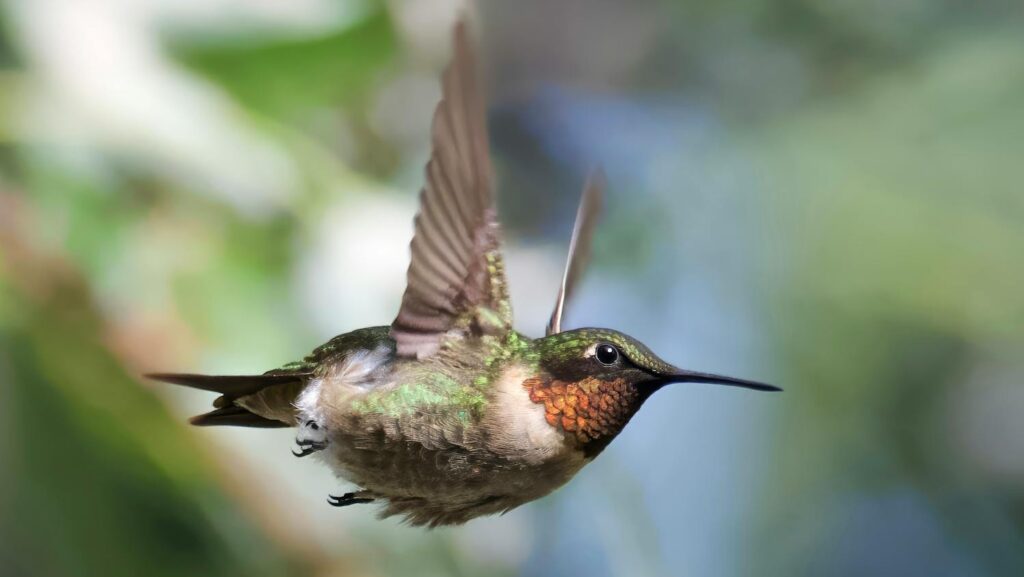
The journey of Ruby-throated Hummingbirds through desert environments represents one of nature’s most remarkable adaptations. What once appeared to be inhospitable barriers have been revealed as essential pathways, perfectly synchronized with the birds’ migration timing and physiological needs. This transformation challenges our understanding of what constitutes valuable habitat and demonstrates the extraordinary evolutionary capacity of species to convert challenges into opportunities. As climate change and development continue to reshape landscapes, the lessons from these desert migrators become increasingly relevant—reminding us that conservation must account for the complex, sometimes counter-intuitive ways that species interact with their environments. The future of these remarkable birds depends on our ability to recognize and protect not just the places they breed and winter, but the critical stopovers that make their extraordinary journeys possible.
